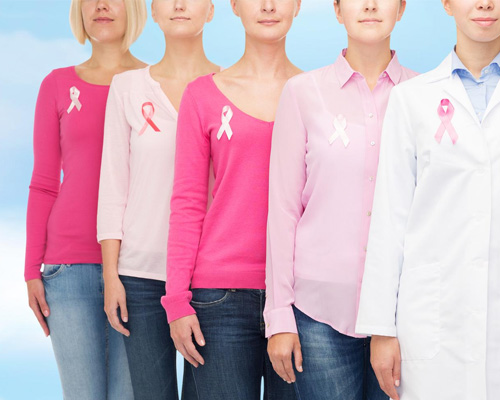
Breast cancer is one of the most frequent types of cancer that women get around the world. Early detection, knowing the symptoms, and knowing what treatments are available all considerably increase the odds of a good outcome. This guide gives you a clear and complete picture of how to spot, understand, and fight breast cancer.
Breast Cancer: Overview
When cells in the breast grow out of control, they create a tumor, which is breast cancer. It can happen to both men and women, although it happens more often to women. The cancer can grow inside the breast or spread (metastasize) to other regions of the body.
Breast Cancer Symptoms
Early breast cancer generally doesn’t have any symptoms, so it’s important to do regular self-exams and tests. When symptoms do show up, they can be:
- Lump in the Breast or Underarm: The most common indication is a lump in the breast or underarm. It hurts a lot of the time, yet some lumps are gentle or delicate.
- Change in the size or shape of your breasts: Any change that isn’t explained could be an indication.
- Changes in the skin: dimpling, puckering, redness, thickness, or scaling on the skin of the breast or around the nipple.
- Changes to the nipple: twisting inward (inversion), soreness, discharge that isn’t milk (particularly if it’s bloody), or a rash.
- Swelling: In some or all of the breast, even if there isn’t a lump.
- Swollen Lymph Nodes: If cancer has spread, swollen lymph nodes can be found in the underarm or around the collarbone.
It’s crucial to remember that these signs don’t necessarily signify cancer, but you should see a doctor if they don’t go away.
Stages of Breast Cancer
A staging method (Stage 0 to IV) that shows how far the cancer has spread is used by doctors to talk about breast cancer:
| Stage | What it Means |
| Stage 0 | Non-invasive cancer found only in the ducts or lobules (e.g., DCIS). |
| Stage I | Early-stage invasive cancer; small tumor, limited to breast. |
| Stage II | Larger cancer or cancer that has spread to a few nearby lymph nodes. |
| Stage III | More extensive cancer, involving more lymph nodes or nearby tissues but not distant organs. |
| Stage IV | Cancer has spread to distant organs such as bone, liver, lungs, or brain (metastatic breast cancer). |
Staging aids in identifying the optimal treatment strategy and prognosis.
Diagnosis
Doctors may use a number of tools to find breast cancer:
- Imaging tests like mammograms, ultrasounds, or MRIs seek problems.
- Biopsy is taking a small piece of breast tissue out for testing in a lab.
- Other Tests include Blood tests, genetic tests, and scans to see how far the disease has spread.
Treatment Options
The type and stage of cancer, as well as the person’s condition, determine the treatment. The main treatments are:
1. Surgery
The most common first treatment. Choices are:
- Lumpectomy: Taking off the tumor plus a little amount of tissue around it.
- Mastectomy: Taking off all of the breast tissue, and occasionally also adjacent tissues.
2. Radiation Therapy
Uses strong radiation to kill any cancer cells that are still there after surgery.
3. Chemotherapy
Drugs that kill cancer cells, usually given by an IV or by mouth, before or after surgery.
4. Hormone (Endocrine) Therapy
For tumors that are positive for hormone receptors. Stops the body from making or using estrogen and/or progesterone.
5. Targeted Therapy
Drugs that work on certain gene alterations or proteins in cancer cells, including HER2-positive breast tumors.
6. Immunotherapy
It makes the immune system fight cancer cells. Used to treat some kinds of advanced breast cancer.
Living with and Beyond Breast Cancer
Many women get better totally because they find out about their cancer early and get therapy. Managing side effects, going to follow-up appointments, and in some circumstances, breast reconstruction surgery are all part of recovery. For mental health, emotional support, counseling, and support groups are very vital.
Prevention & Self-Care Tips
These techniques may help lower the risk of breast cancer, even though not all of it can be avoided:
- Keep your weight in a healthy range
- Work out on a regular basis
- Drink less alcohol
- Stop smoking
- If you can, breastfeed
- Be conscious of your family’s history.
Getting regular mammograms and telling your doctor about any changes in your breasts can save lives.
Conclusion
Women may take care of their health by learning about breast cancer, including its warning signs, stages, and therapies. Being aware and getting medical help quickly can make a big impact.
At Apex Multispecialty Hospital, we promise to give every woman the care and support she needs with the help of innovative technology and trained professionals. Every day, we are committed to your health.




